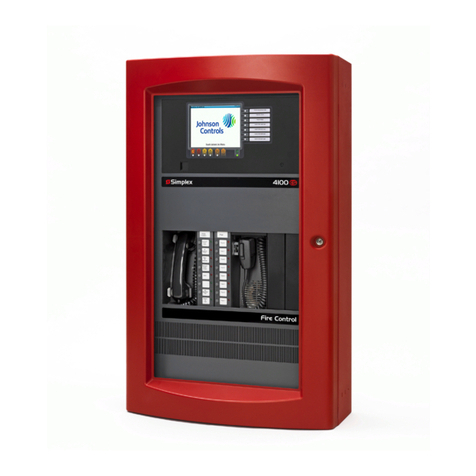
2
READ AND SAVE THESE INSTRUCTIONS. Follow the instructions in this installation
manual. These instructions must be followed to avoid damage to this product and associated
equipment. Product operation and reliability depends upon proper installation.
ELECTRICAL HAZARD -Disconnect electrical field power when making any internal
adjustments or repairs. Servicing should be performed by qualified Simplex Representatives.
STATIC HAZARD - Static electricity can damage components. Therefore, handle as follows:
• Ground yourself before opening or installing components (use the 553-484 Static Control
Kit).
• Prior to installation, keep components wrapped in anti-static material at all times.
If requested by the telephone company, the following information must be provided before
connecting the DACT to telephone lines:
• Original Manufacturer: Simplex Time Recorder Company
• Model Number: 4100-6052/6053
• Compliance: FCC Part 68 Rules
• FCC Registration Number: 5QWUSA-30334-AL-E
• Type of Jack(s) (to be installed by the telephone company): RJ-31X
• Type of Connector(s): RJ-45
• Ringer Equivalence: AC 0.1B/DC 1.6
The Federal Communications Commission (FCC) has established specifications that permit this
device to be directly connected to the telephone network.
Simplex Time Recorder
100 Simplex Drive
Westminster, MA 01441
U.S.A.
declares that the Simplex Model 4100-6052 Event Reporting Digital Alarm Communications
Transmitter and the 4100-6053 Point Reporting Digital Alarm Communications Transmitter
conform to the FCC’s specifications:
Part 15:
Operation is subject to the following two conditions:
1. This device may not cause harmful electromagnetic interference, and
2. This device must accept any interference received including interference that may cause
undesired operation.
Part 68:
This equipment complies with FCC Rules Part 68. A label containing the FCC Registration
Number and the Ringer Equivalence Number (REN) is located on the top of the Fire Alarm
Control Panel bay in which this DACT is installed. You must provide this information to the
telephone company when requested.
Continued on next page
Cautions, Warnings, and Regulatory Information
Information You May
Need to Provide to
the Telephone
Company
Manufacturer’s
Declaration of
Conformity





























